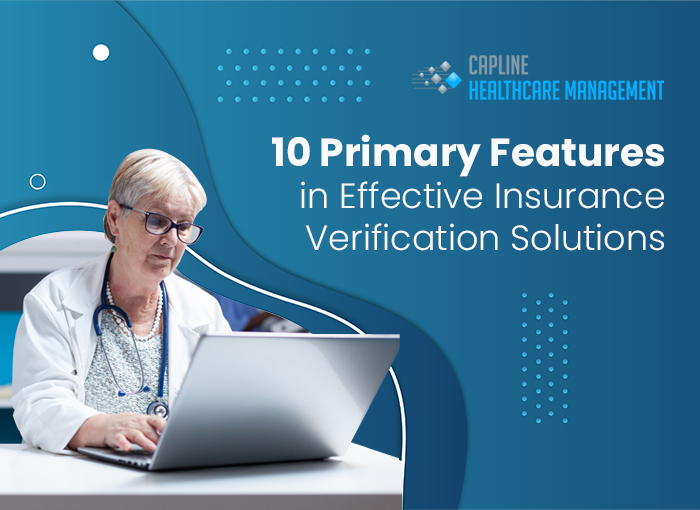10 Primary Features in Effective Insurance Verification Solutions
The primary focus of practice should be to treat their patients and not worry about Insurance verification in medical billing. The primary concern of a patient should be their health status and not their insurance verification status. So who takes care of the insurance?
Insurance updates and verification should be managed by your insurance verification system. In this article, we shall be listing the top 10 features that you could include in your insurance verification process to speed it up.
1. PMS:
A Practice Management System or PMS helps you to be notified about a patient’s appointment before their visiting date. This way, your staff has enough time to look up their insurance plan and check for the services covered in it.
2. Information update:
After going through a patient’s insurance plan, if your team comes up with a piece of information that is missing about the patient, the front office can call the patient and ask them for the information update. This must be done before the day of the appointment with the patient.
3. Resubmitted eligibility requests:
Medical insurance verification is a long process and may require a patient’s profile to go through the verification more than once. In such cases, your database must not only store data regarding the last verification but every verification of the patient that has taken place.
4. Key entry eligibility requests:
In most cases, insurance verification is done a week before the patient’s appointment day. But what if the patient gets a last-minute appointment for an emergency? To combat this, key entry eligibility requests must be submitted to the insurance companies to get information on the patient’s insurance plan and the services covered by it.
5. Delivering data within seconds:
An effective Medical insurance eligibility verification System can deliver all the required data about a patient’s insurance plan, within seconds. This data should include the policy year, effective date, Individual and family plan maximum and maximum remaining, Individual and family plan deductible and deductible remaining, each category coverage, per code coverage, etc.
6. Real-time results:
Having an insurance verification system that serves you the information in real-time, can be such a blessing when you need any updates on a patient’s insurance status.
7. Estimating insurance payment:
The insurance verification solution should be able to provide information about deductibles, benefits coverage, co-pay, co-insurance, etc, and be able to estimate the amount that the insurance company shall be paying and the amount the patient will have to pay themselves.
8. Authorization:
Several insurance companies have policies that require you to have authorization before you get the billing. Your insurance verification system should be able to not just manage the authorization but also track its progress.
9. History Saving:
Your insurance verification system should be able to save the Patient Eligibility Verification data of all the patients you’ve served in the past.
10. Insurance Reports :
Your system should be able to provide you with reports on how many patients have their appointments scheduled for a particular day and what is the status of their insurance verification.
End note:
To avoid claim denials, practices must have an efficient insurance verification system that is not only able to store patient’s data but also presents comprehensive reports whenever required. Capline Healthcare Management can help practices stay on track with the verification status in real time. This means one thing for practices- Fewer claim denials and better revenue. Contact our customer success team today to know more.




